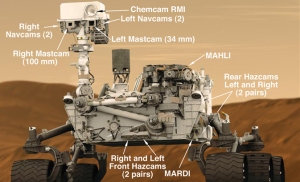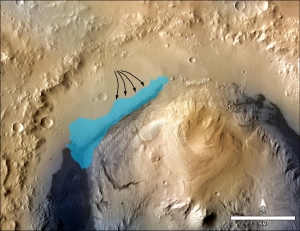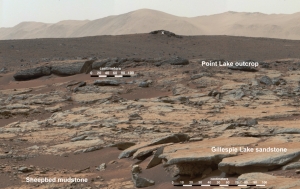
100,000 zaps and counting
Astronomy News (December 05, 2013) –

Astronomy News – The human journey to the beginning of space and time reached another milestone today as NASA’s Curiosity spacecraft fired its infrared laser for the 100,000th time. Curiosity has been conducting an experiment to determine the basic chemical elements contained within martian rocks and soils using the Chemistry and Camera Instrument (ChemCam). ChemCam has fired more than 102,000 times as of December 01, 2013, at 420 martian rocks and soils, and taken over 1,600 HD pictures using its onboard camera.

At the moment, an international team of astronomers and scientists are going over the data provided by Curiosity and ChemCam in order to list the chemical elements contained within the 420 samples they fired the laser at. This will give them a good idea of the chemical elements on the surface of Mars’ Gale Crater and the geophysical processes that formed them. ChemCam fires an infrared laser at rocks and soil targets to create plasma gas, which it analysis using a scientific technique called laser-induced breakdown spectroscopy.

Curiosity is the first NASA mission to use this scientific technique to analysis rocks and soils on a different planet, but certainly not the last. You can learn more about ChemCam at http://www.msl-chemcam.com.
You can find more on NASA’s Curiosity spacecraft and its mission to Mars at http://www.nasa.gov/msl and http://mars.jpl.nasa.gov/msl/. You can follow the Curiosity spacecraft mission on Facebook at: http://www.facebook.com/marscuriosity and on Twitter at: http://www.twitter.com/marscuriosity.
Take part in our astronomy poll below
Watch videos about Curiosity on YouTube here https://www.youtube.com/watch?v=DIvbvV7RXp8.
Can NASA astronomers detect extraterrestrial moons orbiting distant suns? Read this article to find out https://spaceshipearth1.wordpress.com/2013/12/31/searching-for-extraterrestrial-moons/.
Read about the latest discovery in the search for life beyond Earth https://spaceshipearth1.wordpress.com/2013/12/25/the-search-for-life-beyond-earth-takes-a-turn-at-jupiter/.
Read about the latest images of the solar system sent back by the Cassini spacecraft https://spaceshipearth1.wordpress.com/2013/12/22/cassini-spacecraft-show-views-of-the-solar-system-in-natural-color/.
